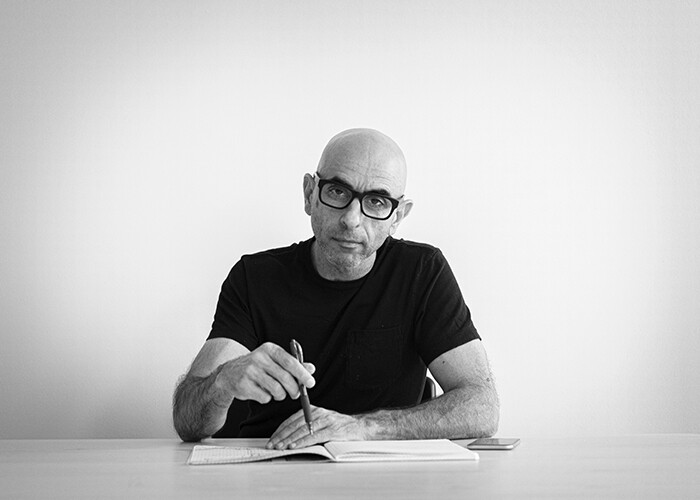
The College of Architecture will welcome Nader Tehrani, nationally-renown designer of architecture school buildings, including the newest addition to Architecture Hall, for the first Hyde Lecture of the season.
His talk, “The Animate Analytique,” is at 4 p.m. Oct. 13, in the Sheldon Museum of Art’s Ethel S. Abbott Auditorium.
Tehrani is founding principal of NADAAA, a practice dedicated to the advancement of design innovation. He is also a professor and former dean of The Irwin S. Chanin School of Architecture of The Cooper Union in New York. His research focuses on the transformation of the building industry, innovative material applications and the development of new means and methods of construction, especially through digital fabrication. Tehrani’s work has received many prestigious awards, including nineteen Progressive Architecture Awards. Tehrani has been named the 2022 Design Visionary by Cooper Hewitt, Smithsonian Museum of Design and has recently been elected to the American Academy of Arts and Sciences.
Tehrani’s work has been exhibited at MOMA, LA MOCA, and ICA Boston. His work is also part of the permanent collection of the Canadian Center for Architecture and the Nasher Sculpture Center.
For this lecture, Tehrani will explore the role of representation in architecture and the visual literacy required to engage in the design process. He postulates “intellectual health” has often been sidelined in contemporary education, advocating for a concurrent depth and breadth of discussion within the discipline but with a receptiveness towards externalities that designers must invite into the process.
As Tehrani expounds, the composite drawing in the form of the Beaux Arts analytique served as an architectural tool to reveal critical part-to-whole relationships, all while adopting tectonic fragments at varied scales to show how even organic artifacts can be the result of hybrid thinking. Economical in its representation at one level, but also complex, allusive and inventive at another, the analytique indicated that architecture is somehow projected amongst different forms of representation – for instance, between the plan and section. The animate analytique extends this tradition by incorporating time and motion, both central to architectural cognition, to illustrate fluid connections between forms of representation, ideas and the creative process. Inherently pedagogical as a device, it is also a means to reveal the instrumentality of specific modes of representation in dialogue and confluence.
Conceived as both a design tool and post-game analysis, the animate analytique constructs a narrative that is as succinct in its ability to illustrate simple diagrams as it is complex in its ability to synthesize heterogeneous ideas.
This presentation is part of the College of Architecture’s 2023-24 Hyde Lecture Series featuring speakers from across disciplines that are united under the common theme of “Advancing Health: Planning and Designing for Healthful Places,” a thought-provoking series that highlights the important connection between the built environment and human health. Join the lecture series and explore avenues strategizing and creating healthful places that foster a brighter, more equitable future.
The college’s Hyde Lecture Series is a long-standing, endowed, public program. Each year the college hosts compelling speakers in the fields of architecture, interior design, landscape architecture and planning that enrich the ongoing dialog around agendas which are paramount to the design disciplines and our graduates.







